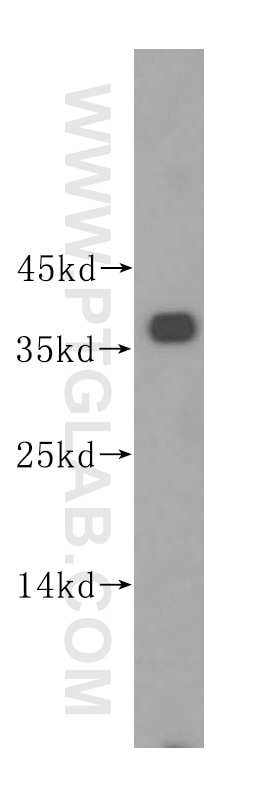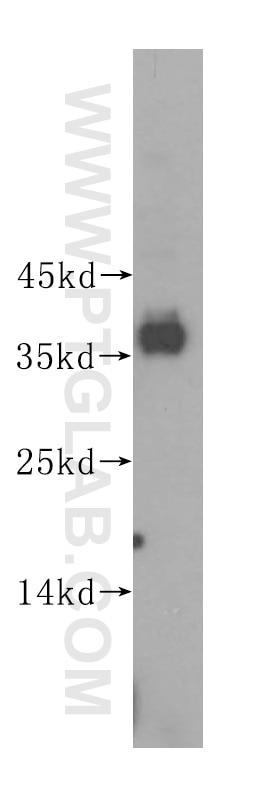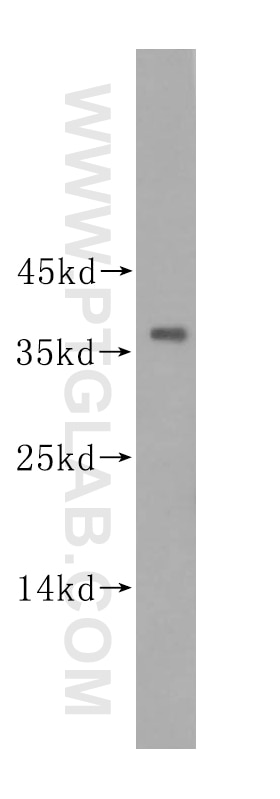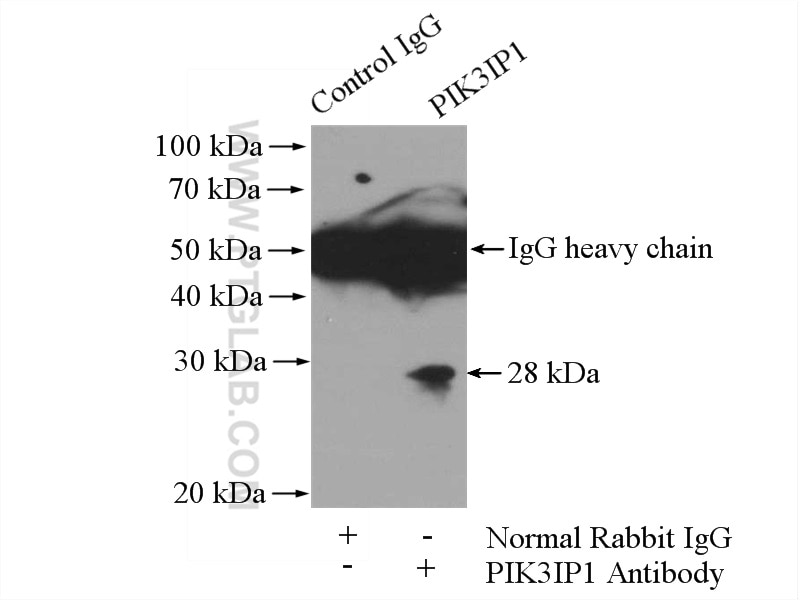- Phare
- Validé par KD/KO
Anticorps Polyclonal de lapin anti-PIK3IP1
PIK3IP1 Polyclonal Antibody for WB, IP, ELISA
Hôte / Isotype
Lapin / IgG
Réactivité testée
Humain, rat, souris et plus (2)
Applications
WB, IF, IP, CoIP, ELISA
Conjugaison
Non conjugué
N° de cat : 16826-1-AP
Synonymes
Galerie de données de validation
Applications testées
| Résultats positifs en WB | cellules HeLa, cellules HepG2, tissu hépatique de souris |
| Résultats positifs en IP | cellules HeLa |
Dilution recommandée
| Application | Dilution |
|---|---|
| Western Blot (WB) | WB : 1:500-1:2000 |
| Immunoprécipitation (IP) | IP : 0.5-4.0 ug for 1.0-3.0 mg of total protein lysate |
| It is recommended that this reagent should be titrated in each testing system to obtain optimal results. | |
| Sample-dependent, check data in validation data gallery | |
Applications publiées
| KD/KO | See 4 publications below |
| WB | See 15 publications below |
| IF | See 1 publications below |
| CoIP | See 1 publications below |
Informations sur le produit
16826-1-AP cible PIK3IP1 dans les applications de WB, IF, IP, CoIP, ELISA et montre une réactivité avec des échantillons Humain, rat, souris
| Réactivité | Humain, rat, souris |
| Réactivité citée | rat, bovin, Humain, poulet, souris |
| Hôte / Isotype | Lapin / IgG |
| Clonalité | Polyclonal |
| Type | Anticorps |
| Immunogène | PIK3IP1 Protéine recombinante Ag10427 |
| Nom complet | phosphoinositide-3-kinase interacting protein 1 |
| Masse moléculaire calculée | 263 aa, 28 kDa |
| Poids moléculaire observé | 37 kDa |
| Numéro d’acquisition GenBank | BC011049 |
| Symbole du gène | PIK3IP1 |
| Identification du gène (NCBI) | 113791 |
| Conjugaison | Non conjugué |
| Forme | Liquide |
| Méthode de purification | Purification par affinité contre l'antigène |
| Tampon de stockage | PBS with 0.02% sodium azide and 50% glycerol |
| Conditions de stockage | Stocker à -20°C. Stable pendant un an après l'expédition. L'aliquotage n'est pas nécessaire pour le stockage à -20oC Les 20ul contiennent 0,1% de BSA. |
Informations générales
PIK3IP1(Phosphoinositide-3-kinase-interacting protein 1) is also named as HGFL. The class IA phosphoinositol-3-kinases (PI3Ks) regulate important cellular processes such as proliferation, growth, survival, motility and metabolism. PIK3IP1 is a transmembrane protein that possesses a region in its intracellular domain that shares homology with the p85 regulatory subunit of PI3K. It has 5 isoforms produced by alternative splicing with the MW of 11, 18, 19, 25,28 kDa. PIK3IP1 undergoes N- and O-linked amino acid glycosylation. The major glycosylated form of PIK3IP1 migrates at about 43 kDa in western blot analysis, while the unglycosylated form migrates at 37 kDa. It is also detected a 65 kDa variant in HepG2 cell lysate that PIK3IP1 is indeed membrane bound and that these variants arise from alternative splicing and/or post-translational processing events such as enzymatic proteolysis and/or glycosylation. (PMID:18632611).
Protocole
| Product Specific Protocols | |
|---|---|
| WB protocol for PIK3IP1 antibody 16826-1-AP | Download protocol |
| IP protocol for PIK3IP1 antibody 16826-1-AP | Download protocol |
| Standard Protocols | |
|---|---|
| Click here to view our Standard Protocols |
Publications
| Species | Application | Title |
|---|---|---|
Cell Distinct Regulation of Th17 and Th1 Cell Differentiation by Glutaminase-Dependent Metabolism. | ||
Nat Commun Dual blockade of the lipid kinase PIP4Ks and mitotic pathways leads to cancer-selective lethality.
| ||
Oncogene PPM1D activity promotes cellular transformation by preventing senescence and cell death | ||
J Immunol Cutting Edge: Foxp1 Controls Naive CD8+ T Cell Quiescence by Simultaneously Repressing Key Pathways in Cellular Metabolism and Cell Cycle Progression. | ||
Sci Rep Downregulation of PIK3IP1 in retinal microglia promotes retinal pathological neovascularization via PI3K-AKT pathway activation |





